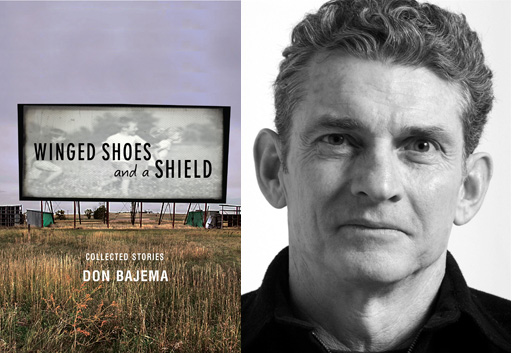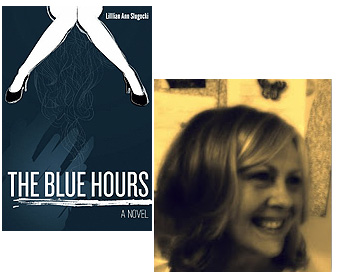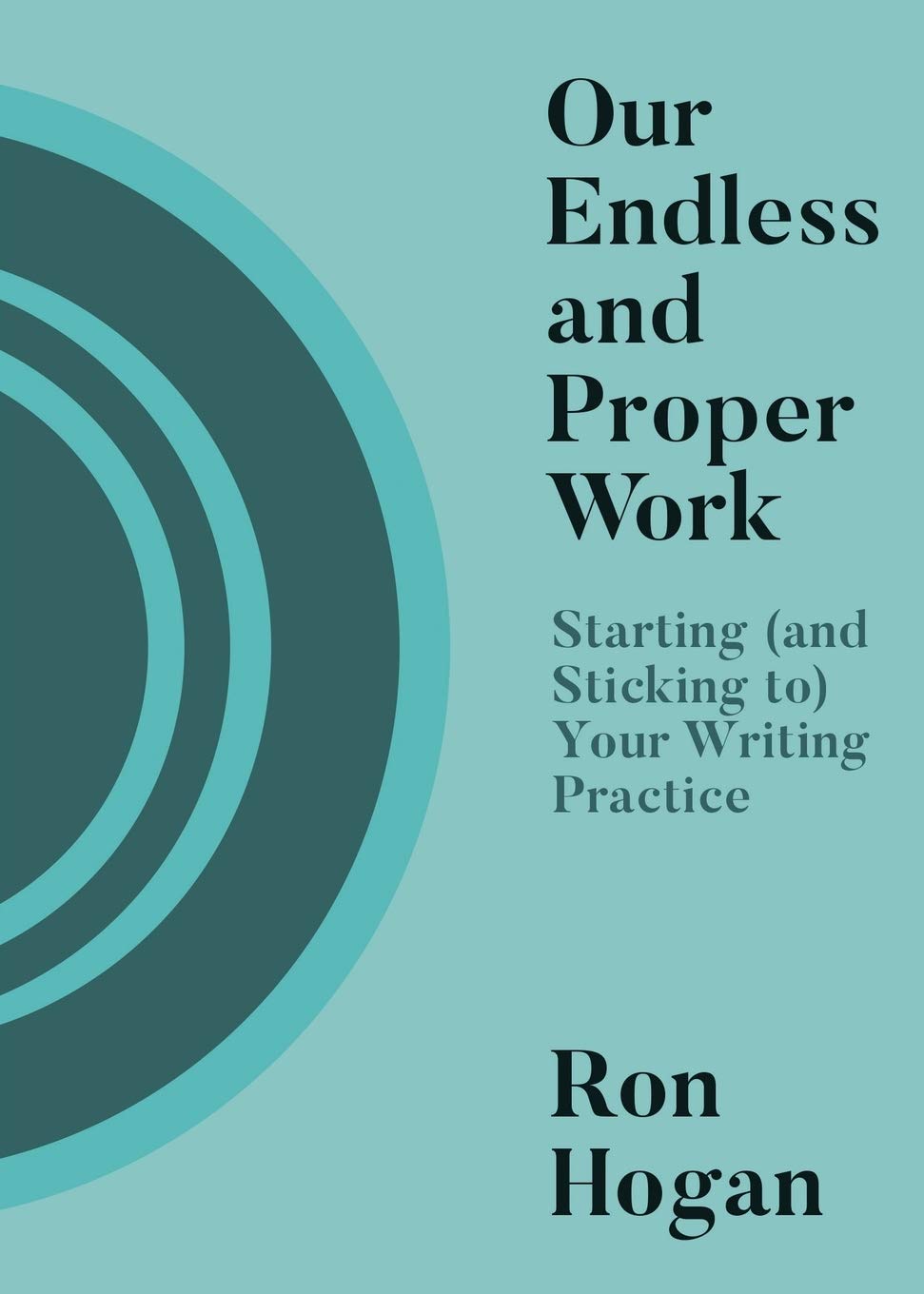Don Bajema Slips Back into the Twilight Zone

photo courtesy City Lights
When I received Don Bajema’s collected short stories, Winged Shoes and a Shield, I knew I wanted to have him as a guest author here at Beatrice. Usually, for short story writers, that means talking about a particular short story that’s meaningful or influential to them—but Bajema had another idea about the stories that molded his imagination. He makes a powerful point; as someone who’s only ever experienced The Twilight Zone in reruns, and these days primarily in nostalgic “marathon” showings, it can be challenging for me to remember just how challenging and provocative the best episodes were when they first aired. Don Bajema helps me (and maybe you!) remember.
Being asked to speak to a major literary inspiration or influence increases my heart rate at the prospect of leaving so many out. So I’ll look back to the seminal influences and skip many breath-taking works and those many moments I’ve gazed up from the page with admiration.
Reading Mark Twain’s Huckleberry Finn as a third grader inspired me to walk barefoot to school along deer trails in San Diego imagining steamboats rounding canyon walls in the hope I was escaping the effects of civilization. For months, all black asphalt was a slow running river, cars were boats afloat and my sole purpose was to escape school, avoid work, formulate adventures, and stay outside after dark. As the Mississippi ran through Southern California I did my utmost to live up to the code of boyhood Huck had bequeathed us.
Then came a thirty-minute television program on a weeknight, was it Thursday? Or maybe we were so enthralled with the show that a Friday night viewing would stretch through the weekend into Monday morning and guarantee generating a chattering all-at-once conversation by asking, “Oooo, did you see The Twilight Zone?”
Delicious subversion! Mind-bending premises, twists of fate, comeuppance and lessons begging for debate embedded into the outcomes. Everyone knows the Burgess Meredith tragedy. Standing in the rubble of a post-nuclear storm—the bleak set design taken from photographs of Hiroshima or Nagasaki—poor Burgess amid a sea of books wanting only to read, his thick glasses shattered by his own footstep crying, “It’s not fair, it’s not… fair. It’s just not… fair.” We were, ourselves, in the days of duck and cover drills, and every Tuesday noon the sirens wailed from sea to shining sea. Americans from cityscapes to suburbs were supposed to remember the locale of the nearest bomb shelter.
I hope that by citing a network television show as literary influence I’m not making myself appear pedestrian, uninspired and unimaginative.
2 October 2012 | guest authors |
Lillian Ann Slugocki: The Mythic Arc of The Blue Hours
 I met Lillian Ann Slugocki in 2001, shortly after she and Erin Cressida Wilson had published The Erotica Project, a series of monologues that they’d co-written for various theatrical and print formats. I’ve stayed in touch with Lillian over the years, so I was delighted recently to hear that she’d taken the plunge into digital publishing with The Blue Hours, a Newtown Press ebook for the Amazon Kindle that has its origins in a serial she wrote for Salon shortly after the success of the Project. In this essay, Lillian talks about the challenges of expanding the story well beyond its original size, and the dramatic solution she found to give the novella its final shape.
I met Lillian Ann Slugocki in 2001, shortly after she and Erin Cressida Wilson had published The Erotica Project, a series of monologues that they’d co-written for various theatrical and print formats. I’ve stayed in touch with Lillian over the years, so I was delighted recently to hear that she’d taken the plunge into digital publishing with The Blue Hours, a Newtown Press ebook for the Amazon Kindle that has its origins in a serial she wrote for Salon shortly after the success of the Project. In this essay, Lillian talks about the challenges of expanding the story well beyond its original size, and the dramatic solution she found to give the novella its final shape.
When Diary of a Divorce, a series of short erotic stories, debuted on Salon, it got quite a bit of attention from editors at major publishing houses. Which was great. I got to work expanding 10,000 words to 60,000. Except I really didn’t have a strategy.
This was my first foray into fiction writing; prior to this, I’d written plays. I was still flush from the success of The Erotica Project, co-authored with Erin Cressida Wilson. I kept the diary format, but really didn’t invent an arc for the story. It’s not surprising that when it was submitted to these editors, some of them said, “This reads like a memoir not a novel, make it more like a memoir.” And some said, “If this is a novel, it needs more narrative tension.” I tried to please all the editors, both camps, and I don’t think this ever ends well for any writer. When I walked away from it, I simply didn’t know if it was really memoir or fiction, or fictionalized memoir. So I put the “diary” away for a very long time.
Last fall, I was reading The Writer’s Journey by Christopher Vogler. It’s geared towards screenwriters, and the classic three act structure. But since he draws on Joseph Campbell’s The Hero with a Thousand Faces, I knew, obviously, this is one of the classic narrative structures, practically a template, maybe the only template for telling a story.
I had fallen in love with narrative structure while getting an MA at The Gallatin School. In particular I loved V. Propp’s Morphology of the Folktale Like Vogler and Campbell, he distills story telling down to its purest, simplest forms. I was doing all this research because I was writing another book, Scheherazade. I became convinced that despite the fact that the hero is almost a universally male narrative, I could still subvert it, twist it, use for my own purposes—a female narrative.
When I had that book all mapped out, I suddenly realized that this strategy would be perfect for Diary of a Divorce. I hadn’t thought of the piece in a long time, but it always haunted me. I knew there was a great story in there somewhere, and here was the mechanism for teasing it out.
27 August 2012 | guest authors |

 Our Endless and Proper Work is my new book with Belt Publishing about starting (and sticking to) a productive writing practice.
Our Endless and Proper Work is my new book with Belt Publishing about starting (and sticking to) a productive writing practice. 
